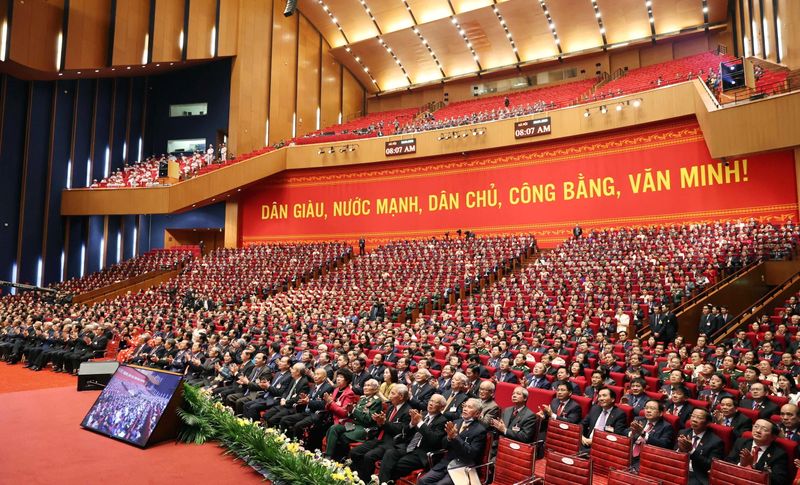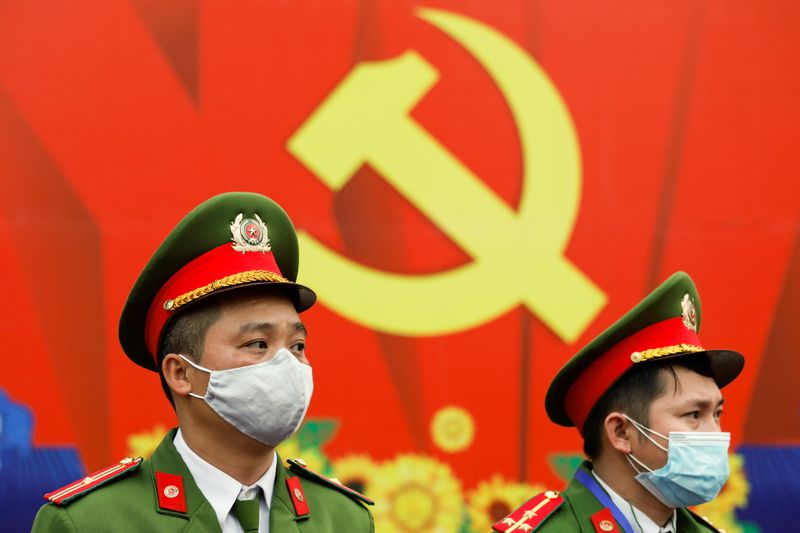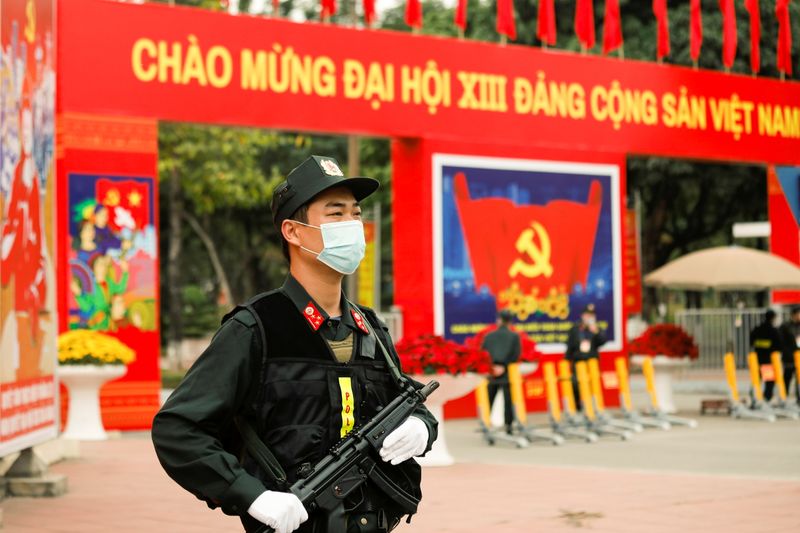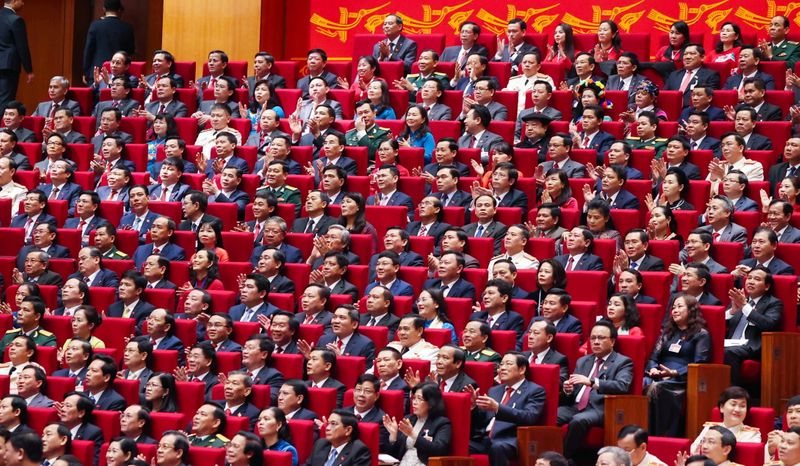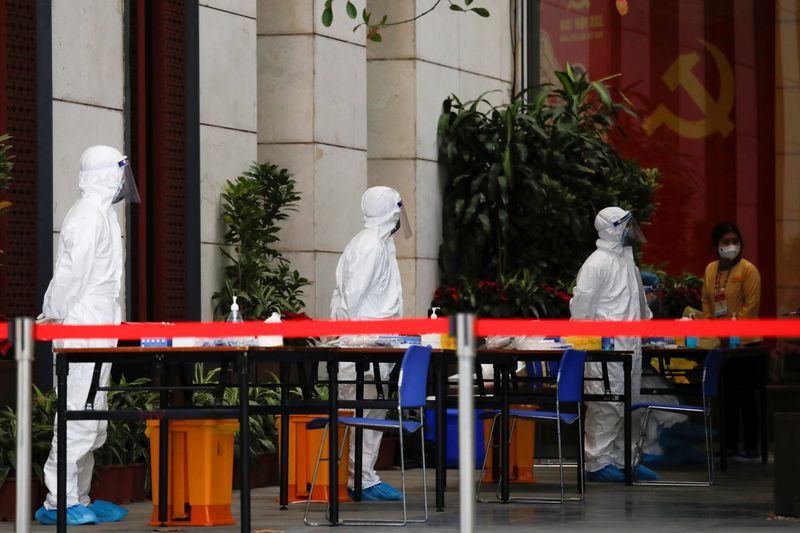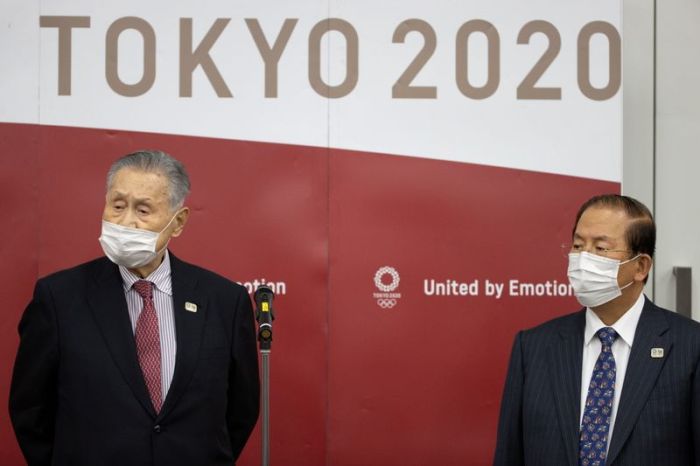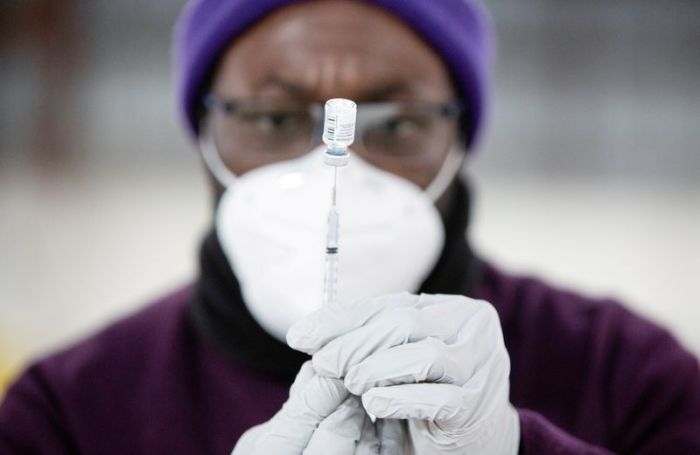HANOI (Reuters) – Vietnam’s worst single-day coronavirus outbreak so far, its first for nearly two months, gatecrashed the Communist Party’s carefully choreographed five-yearly congress on Thursday – a major headache for a government that has prided itself on keeping the pandemic at bay.
After 84 new cases were detected in the northern provinces of Hai Duong and Quang Ninh, the health ministry massively ramped up testing and quarantine calls. State television quoted the coronavirus taskforce chief as saying preparations should be made for a scenario of up to 30,000 COVID-19 cases.
The health ministry has proposed halting international flights and banning large gatherings ahead of the Lunar New year holiday season, just two weeks away.
The government late on Thursday said it will build three field hospitals in Hai Duong province, without giving their sizes.
Prime Minister Nguyen Xuan Phuc urged calm and promised swift action at an urgently called meeting on the sidelines of the congress. Against a backdrop of a buoyant economy, bolstered by keeping coronavirus cases to around 1,600 and deaths to just 35, the congress will select Vietnam’s leadership and shape policy for the next five years and beyond.
“During the congress, we have to stay very calm, so the delivery of this news should be done in such a way as to not create any complicated thinking among the people alongside the congress,” Phuc told members of the national COVID-19 taskforce, according to a recording of the meeting reviewed by Reuters.
“We need to take strong measures to effectively prevent community infection,” Phuc said. “We’ll do it fast but calmly, so as not to cause disorder in people’s lives, and especially to ensure the success of the congress.”
Health Minister Nguyen Thanh Long told the meeting the new outbreak, centred in a province near Hanoi, could be worse than an earlier outbreak in the tourist city of Danang.
HUGE EFFORTS
The country has avoided the larger epidemics seen by its neighbours and many other countries in part by effectively closing its borders and imposing strict quarantines, as well as testing and tracing.
Later on Thursday, Deputy Prime Minister and coronavirus taskforce head Vu Duc Dam said the two northern provinces where the new cases were found should speed up contact-tracing and prepare for the scenario of 30,000 cases, state broadcaster VTV reported.
The education minister ordered schools in the affected areas to close, with some schools in the capital advising their students to wear masks and prepare for the possibility that they may have to study online.
The outbreak had spread to two more areas, state media reported late on Thursday, referring to cases in Bac Ninh province and the nearby port city of Hai Phong.
The unwelcome jolt came just as Vietnam earned a top three spot in a survey of how well countries around the world have handled the pandemic. The Vietnamese stock index dropped 6.67% on Thursday to its lowest point since Dec. 4.
Authorities rushed to test tens of thousands after the health ministry reported two locally transmitted cases, one of which was exposed to an individual who had tested positive in Japan for the more contagious B.1.1.7 UK variant.
Health Minister Long said at the meeting on the sidelines of the Party congress that Vietnam had so far not seen so many tests come back positive: a total of 72 out of 138 people to have come into contact with one of the two new cases reported on Thursday morning tested positive for the virus, Long said.
A village and an electronics factory was locked down on Thursday, with 2,340 workers quarantined in Hai Duong – a province next to Hanoi – and huge contact tracing efforts launched.
Containment efforts could be complicated by the upcoming Lunar New Year holiday period, when big gatherings indoors are typical.
“We’ve encountered such a problem many times so we have to stay calm,” Prime Minister Phuc said at Thursday’s emergency meeting, calling for strong measures but not to cause panic.
Among problems weathered by the country was a first wave of infections, crushed in April. The country went nearly 100 days without local transmissions until the Danang outbreak.
(Reporting by Phuong Nguyen, Khanh Vu and James Pearson; Writing by Martin Petty; Editing by Alexandra Hudson, Kevin Liffey and Peter Graff)

